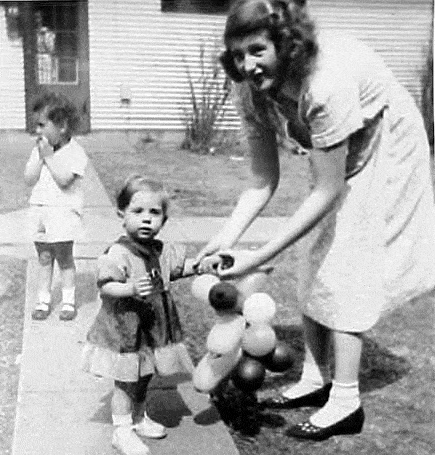Women and Children of Tin City

The Campus Court Apartments, better known as “Tin City,” were living quarters made for veteran families by the University of Evansville in 1946. While there are no written records about the lives of the women and children who made Tin City their home, it is still possible to learn about how they lived. We can step through time and get a glimpse of what life was like for the women and children by using artifacts that were found while excavating the site and interviews with the former occupants. We can explore the history that lies beneath the ground on the Evansville campus.
Tin City wasn’t the most spectacular place to live, but it was a blessing for the families that did get to live there because it wasn’t very expensive. The apartment was made up of a living room, bathroom, and two bedrooms. The floor was made of concrete, and there was only one gas heater that was used to heat the entire apartment. Thus, it was very hot in the summer and very cold in the winter. Most families had to provide their own furniture, some examples including a fridge, couch, washer, table, etc. The women who lived there thought that the apartments were a very nice place to stay and raise a family, especially after decorating the apartments and making them really feel like a home.
Most of the veterans who occupied the apartments came with wives and families of around 2-4 children, with some women even having more children while living at the apartments. Because of this, most of the children staying in Tin City were very young. The front lawn was the center of socialization for these children. They played together constantly, participating in all forms of activities from building houses in the fields to finding places to dig to riding bikes around the campus.
The tin roofs of the apartments--the reason it received its nickname--are memorable to most of children because of the sound that was made during a rainstorm when they were trying to nap. In short, the communal and social atmosphere of the apartments provided the children of Tin City with a wonderful way grow up, as they were never lacking in playmates.

The lives of the women who lived at Tin City were very satisfactory as well. Per the norm, most of them stayed at home and took care of the children. However, if one did have a job, it was no trouble at all for one of the other mothers to step in and babysit for them. Though some families had cars, most found them to be unnecessary, as walking was suited just fine for errand running and the social atmosphere of the apartments allowed for a community of sharing. The bulk of this socialization occured in the front yard. One apartment had a big tree in the front that the women would sit under to gossip, catch up, and watch the children play. The backyard was used to hang clothes on lines to dry, as most of the residents did not have a dryer.
The residents even had their own form of communication by pounding on the walls between apartments. There were two apartments in each building, and the walls separating them were thin. If either family needed help with something, they would pound on the wall and someone on the other side would head over to help. Cockroaches were a problem for some, but if the parties on both sides of the wall sprayed to get rid of them at the same time, the problem was solved. Women did most of the chores around the apartments. Some even mowed the lawns. Life was good for the families who lived here.
Tin City can give us a look into the lives of past college students and their families. We can learn how they lived and what life was like for them, and we already have learned much about these people’s lives. But, there is still much more that can be discovered about the everyday lives of the men, women, and children who occupied these buildings decades ago.
Images
Image 1: Tin City kids, April 1952.
Image 2: Child Debbie Bachman with her mother.
References
Bachman. Personal interview by Muriel Anderson.
Beatty, M., & Beatty, M. (June 15, 2004). Personal interview by Lisa Landis and Micki Blue.
Kaiser, A (2005) "Rediscovering Tin City." UE Magazine Winter. 4-5
Lobeck Brass, K. (June 14, 2004). Personal interview by Lisa Landis.
Wambach, J. Personal interview.
